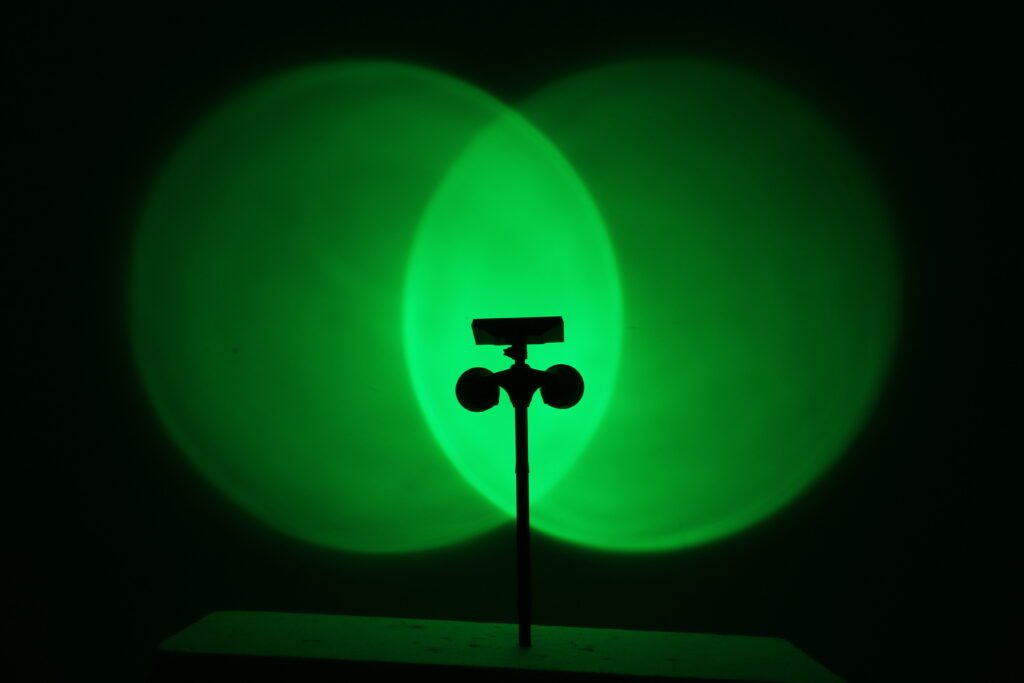LED light is a piece of electroluminescent semiconductor material chip, so when was the LED light invented? Next, we will introduce to you when LED lights were invented.
The principle of LED lights
LED, a light emitting diode, is a solid-state semiconductor device capable of converting electrical energy into visible light. It can directly convert electricity into light. The heart of LED is a semiconductor chip. One end of the chip is attached to a holder, one end is the negative pole, and the other target is connected to the positive electrode of the power supply so that the epoxy resin can encapsulate the entire chip.
A semiconductor wafer consists of two parts sole is a P-type semiconductor, in which the hole dominates. The other end is an N-type semiconductor, in which electrons dominate. But when these two semiconductors are connected, a P-N junction is formed between them. When an electric current is applied to the chip through a wire, electrons are pushed into the P-region, where they recombine with holes and emit energy in the form of photons, which is how LEDs glow. And the wavelength of light, the color of light, is determined by the material that forms the P-N junction.

When was the LED lamp invented?
The story of Edison’s invention of the incandescent lamp is almost familiar, so familiar that it is already lacking in novelty. Edison’s incandescent lamp ruled the world for more than a hundred years after its birth. And in contemporary ages is sought after by people is the newest electric light source – LED lights. It is a word we often see, meaning “light-emitting diode” In its birth, there is a twist in the legendary story. Who would have thought that the new light source that is now in the limelight had been abandoned several times?
In 1907, the British physicist Lund in the study of silicon carbide crystal, accidentally discovered that when the current through the silicon carbide, silicon carbide will emit a dull yellow light.
Edison’s invention of the tungsten filament lamp emits light because the electric current produces too high heat when passing through the tungsten filament, and the temperature can reach over 2,000 degrees Celsius. When the tungsten filament is in a high-temperature incandescent state, it emits light as if it were red-hot iron. From here we can understand that the tungsten filament lamp has two very fatal shortcomings: First, its energy utilization is not high. Light is only a “by-product” of tungsten filament heating. Most of the electricity is consumed by heat. Second, the high temperature will continue to evaporate the tungsten atoms on the tungsten filament the incandescent lamp life will be too short.
The principle of silicon carbide light is totally different: out of a particular physical structure, electrons can be directly excited by light and rapidly jump the “high temperature” step. The perceptive Lund immediately thought of the significance of using silicon carbide as a new light source, but its light was too weak. I’m afraid that only the blind can endure reading in such light. After a few years of hard work, but with nothing to show for it, Ronde finally let go of the research.
A decade passed, and in the late 1920s, two German scientists reintroduced this research from the scientific “trash heap” using not silicon carbide but zinc sulfide and copper extracted from yellow phosphorus. Like silicon carbide, yellow phosphorus has an express physical structure that can emit visible light under the excitation of electrons. Unfortunately, the two scientists thought the situation was too optimistic, and after spending a lot of time and effort, they ended up not vaulting the excessively dim light. The beautiful lamp of LEDs was buried in this way, as it is easy to find a thousand-lipped horse but hard to find a bole.
Suddenly, in the 1950s, with the development of The Times and the progress of technology, the major technology companies devoted themselves to the research of LED lights. After many people’s ongoing efforts, finally, on August 8, 1962, the United States General Electric Company developed the world’s first practical red LED. 10 years later, people made the first yellow LED, and this time the brightness of the LED light was increased by ten times.

As you may have noticed, LED lights depending on the material, can only emit a single color of light. Gallium arsenide diodes can emit red light, silicon carbide diodes can emit yellow light, and later people found that gallium phosphide diodes can emit green light. But the most needed human is white light. To synthesize white light, red light, yellow light, and green light alone are not enough people also need blue light. Normal human eyes can distinguish between the wavelength of light, is between infrared and ultraviolet wavelength, between 450mm and 750mm. Natural light (daylight) includes all wavelengths of light, that is, everything visible to the naked eye and invisible to the naked eye. Because different wavelengths of light pass through the interface (such as glass or water droplets) at different angles with different speeds, daylight can be refracted into seven different colors of visible light: red, orange, yellow, green, cyan, blue, and violet, which is the reason for the formation of the rainbow that we commonly see in our daily lives. It can be seen that all the colors of light are evenly mixed in the lamp composed of white light.
The road to finding blue LEDs has been rough and long, and in the late 60s, Japanese scholar Isamu Akasaki started to research blue LEDs based on gallium nitride. And this research has been carried out diligently for nearly 30 years. He and his student Hiroshi Amano made many contributions to the examination of blue LED in their probe, and in 1994, Shuji Nakamura, who was working in Nichia Chemical, made a blue LED lamp with high brightness by using iridium fume nitride. They also won the Nobel Prize in Physics in 2014 for the success of this research.
The emergence of blue LED immediately brought to people white LED lights. Its maximal advantage is about way high luminous efficiency: an incandescent lamp’s electrical energy into light energy conversion rate of only about 10%, while LED lights can reach 60%, the utilization rate is higher than energy-saving lamps. Second, it has a long life of 100,000 hours and can be used for more than ten years, while the incandescent lamp’s life of only about 1000 hours. Third, LED lights need a very low voltage a few volts is enough, safe, and reliable.





